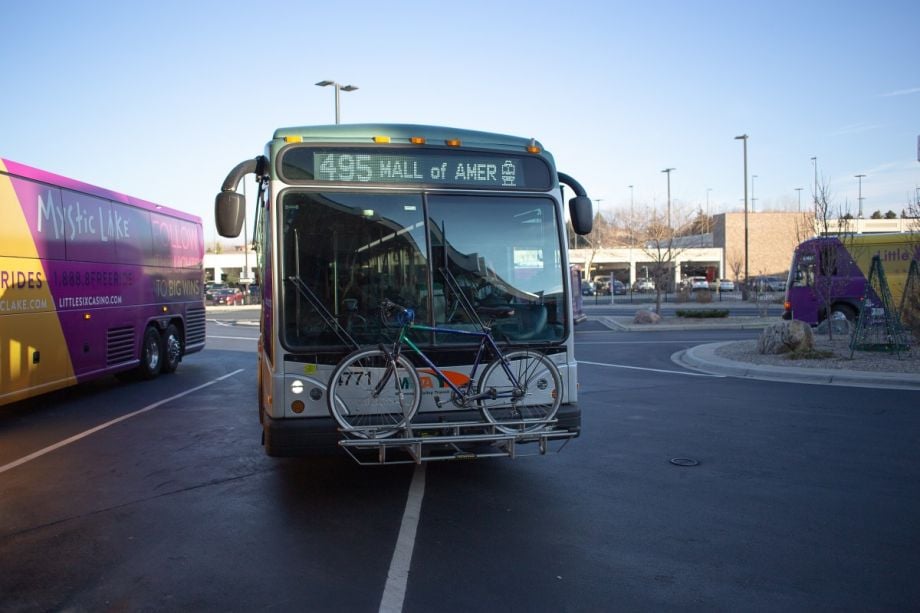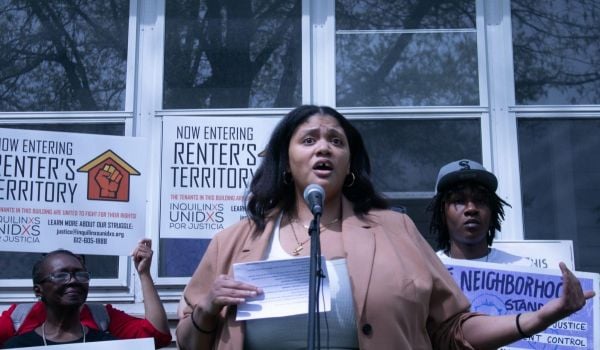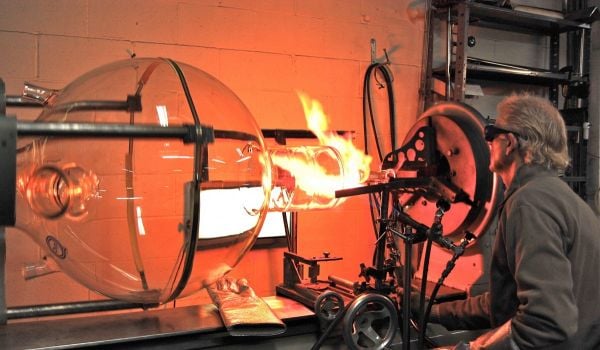In 2019, the Santa Clara Valley Transportation Authority was facing a budget crunch that would require it to pare back much of its express service. Compared to its all-day service, the express routes that connect workers to their workplaces all over Silicon Valley were expensive to operate, had low ridership, and made less money.
That pattern generally holds true across the country. It’s very expensive for transit agencies to operate specialized routes to far-flung destinations, compared to running a more generalized service in a compact and concentrated area.
Had VTA cut all express routes, it would have had some upset riders. But it decided to do something different: ask companies who want the service to pay them directly.
VTA presently operates four express routes, which cost the agency $2.4 million annually. According to a VTA spokesperson, 75% of the costs to run these routes are covered by the agency, while 25% of the costs are covered by Stanford Research Park, which is affiliated with the university of the same name.
VMware, headquartered at the research park, worked with the park to fund the four express routes, although it’s currently not a sponsor. “This program was a solution to VTA making the decision to cut several crucial routes that had previously served VMware and had gained popular ridership among many Santa Clara County-based employees,” said Michael Thacker, director of corporate public relations at VMware.
The idea that corporations should chip in for bus routes used primarily by their own employees is not confined to Santa Clara County. In 2016, Amazon opened a fulfillment center in an industrial park in Shakopee, Minnesota, about 16 miles southwest of Minneapolis. To get workers, who are mostly Somali immigrants, to work, the company partnered with the Minnesota Valley Transit Authority to create Route 495, which runs express between a transit station in Shakopee and the Mall of America, connecting to two rapid transit routes serving Minneapolis along the way. Amazon pays for the last mile solution: about five trips per day extending from the transit station to their front door, about two miles apart.
Although neither Amazon nor MVTA have disclosed the dollar figures as of press time, ridership on the 495 increased steadily since it started in 2016, from just under 18,000 riders to just over 114,000 riders in 2019. Although the pandemic affected ridership on the 495, the route returned to 75% of pre-pandemic ridership as of November.
Luther Wynder, who runs MVTA, finds public-private partnerships valuable, having handled them during his tenure at the Delaware Transit Corporation. Not only does MVTA get more riders riding their buses, employers are also able to get more workers, and people who might need to go somewhere along the route can come along for the ride. “Our first thing we did was, how do we start working with large employers to design and put services out there that will be beneficial to them, but also have them invest in those services that are open to the public, so that they feel they have some skin in the game?” Wynder said about getting corporations to pay for transit service. “Public-private partnerships are very near and dear to me, because I think we’re all in this together.”
Indeed, the 495 has also allowed people to connect not just with working at Amazon, but with other jobs as well. Caroline Orvis, who lives in Blaine, a suburb of Minneapolis 28 miles northeast of Shakopee, takes five buses, including the 495, from her job at a printing plant she has worked at for 23 years to get home. The entire journey takes two and a half hours. Asked why she continues to work there despite the commute, Orvis said, “You get to an age when you don’t want to switch jobs.”
But it appears having corporations pay for transit incrementally is unsustainable long-term. What happens when companies decide to stop funding transit? For example, VTA isn’t running express service to serve Juniper and Lockheed Martin, both of whom planned to participate in the sponsorship program, because their workers are continuing to work from home because of the pandemic.
Though in the meantime, it makes sense to have corporations pay for service if they want it to go to distant locations. “It’s gonna take more bus operator hours to serve [a very distant suburban location]. So, in that case, having the corporation step in and pay for it is better for the transit agency than [the transit agency] just taking on this new expense without any help whatsoever,” says TransitCenter spokesperson Ben Fried, adding that running such a service shouldn’t hamper the agency’s ability to provide service where it is needed the most.
Why Amazon chose Shakopee for one of its fulfillment centers isn’t clear. Although an Amazon spokesperson cites the existence of a talented workforce, support from local and state leaders, and high customer demand in deciding where to locate fulfillment centers, the company has 11 different fulfillment facilities in seven cities across the Twin Cities metro serving different purposes, including one in Minneapolis proper. Even though the city, as well as the county, Scott County, offers incentives to corporations, Amazon did not receive any incentives. (It is, however, receiving $5.7 million in tax increment financing to pay for surrounding roads.)
Cheap and plentiful land could be a factor, which is hard to come by in the Twin Cities proper. The 66-acre parcel where Amazon’s facilities are at now was purchased by a local developer for $2.7 million in 2005, or at about 94 cents per square foot. It was then sold to a company affiliated with USAA Real Estate in 2015 for $10 million, then sold again to Metlife Investment Management in 2020 for $118.7 million. Compare that to a 32-acre parcel in Minneapolis on Industrial Boulevard on the east side of town which sold for $24.4 million in 2007.
To rein in far-flung development, a city or county could incentivize building closer to the urban core, so it would be more cost-effective for transit agencies to serve corporations with large operations — and people — where transit already exists. The Metropolitan Council, which controls land use and the sewage system in the Twin Cities, uses its ability to provide sewer service to regulate development growth.
Minnesota state legislators also plan to introduce a bill next year allowing cities to tax properties on the value of the land itself, not what is built on the land. Although such an initiative could encourage building more high density uses closer to the center city, it might do little to curb sprawl unless the land is also rezoned to either incentivize high density development or to discourage any type of development at all, which exurban communities may be less inclined to do because they want their tax revenue and to live in a low-density environment; in other words, they want to have their cake and eat it too.
And ultimately, Fried says, transit agencies and workers will have to pay for it. “The general trends in American urban regions is towards jobs sprawl, towards employment centers being more spread out from the city center. So the more of the workforce and jobs are located in suburban or urban places, the more expensive it becomes to operate the transit system. And ultimately, the thinner the transit service becomes.”
Editor’s note: We’ve corrected the amount it costs VTA to run the four express routes.

H. Jiahong Pan 潘嘉宏 (pronouns: they/them/佢/他) is a Minneapolis-based introverted freelance journalist who reports primarily on their lifelong passion: transportation issues. Find them on a bus of all types, the sidewalk, bike lane, hiking trail or perhaps the occasional carshare vehicle, camera and perhaps watercolor set or mushroom brush in tow, in your community or state or regional park regardless of season. If you can’t find them, they’re probably cooking, writing, curating an archive of wall art or brochures, playing board games, sewing or cuddling with their cat.
















